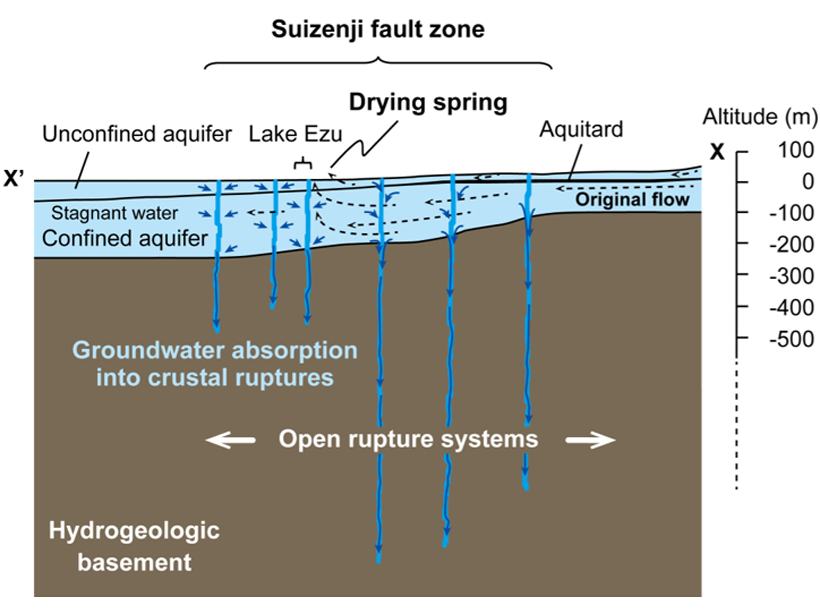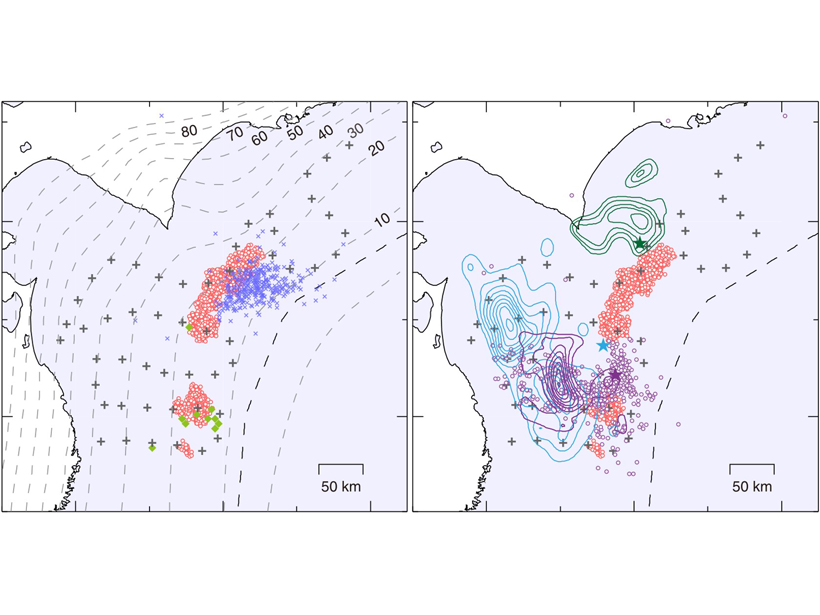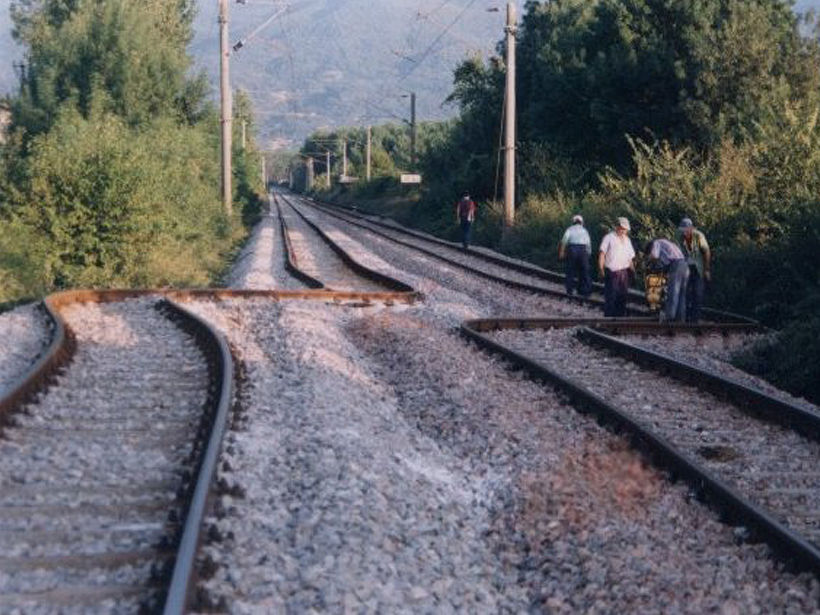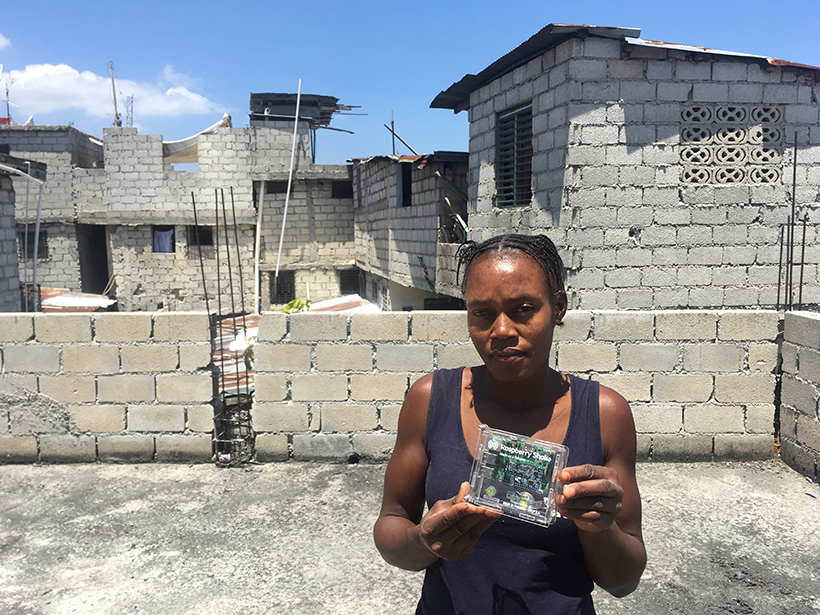A unique set of high-frequency groundwater level monitoring reveals a loss of approximately ten million cubic meters of groundwater after a major earthquake.
earthquakes
Earthquakes Shake Up Groundwater Systems
Increased permeability temporarily boosts water flow.
How Satellite Data Improve Earthquake Monitoring
Case studies from around the world illustrate the power of geodetic data in earthquake monitoring.
Addressing Cascadia Subduction Zone Great Earthquake Recurrence
USGS Powell Center Cascadia Earthquake Hazards Working Group; Fort Collins, Colorado, 25–29 March 2019
Cascading Down the Mountain
Earthquakes in mountain ranges produce a cascade of geological disturbances and hazards, from enormous landslides to climate change.
Shallow Low Frequency Tremors in Japan Trench
A new seafloor seismic network detected low-frequency tremor on the subduction zone interface offshore northern Japan, indicating regions of slow slip in close proximity to shallow megathrust events.
Variations in Creep Along One of Earth’s Most Active Faults
Satellite-based radar images of motion along Turkey’s North Anatolian Fault are helping scientists understand when, where, and how creep occurs and its implications for seismic hazard.
Afghanistan’s Blob Hunters
How a first-of-its-kind team of Afghan scientists and engineers helped make a monolithic discovery.
The Quaking, Shrinking Moon
New evidence suggests that the Moon may still be tectonically active.
Monitoring Haiti’s Quakes with Raspberry Shake
A network of “personal seismometers” is intended to complement Haiti’s national seismic network to engage and inform residents about earthquake hazards and preparation.










